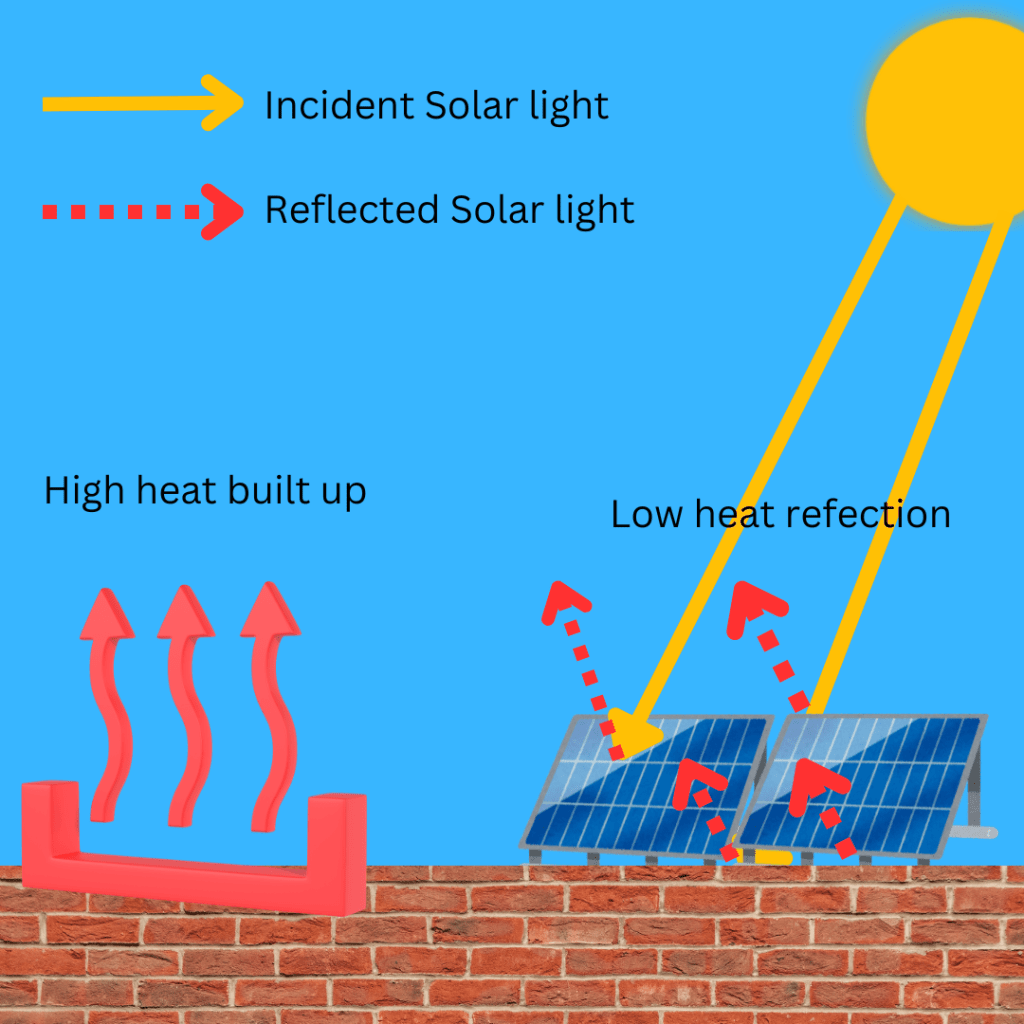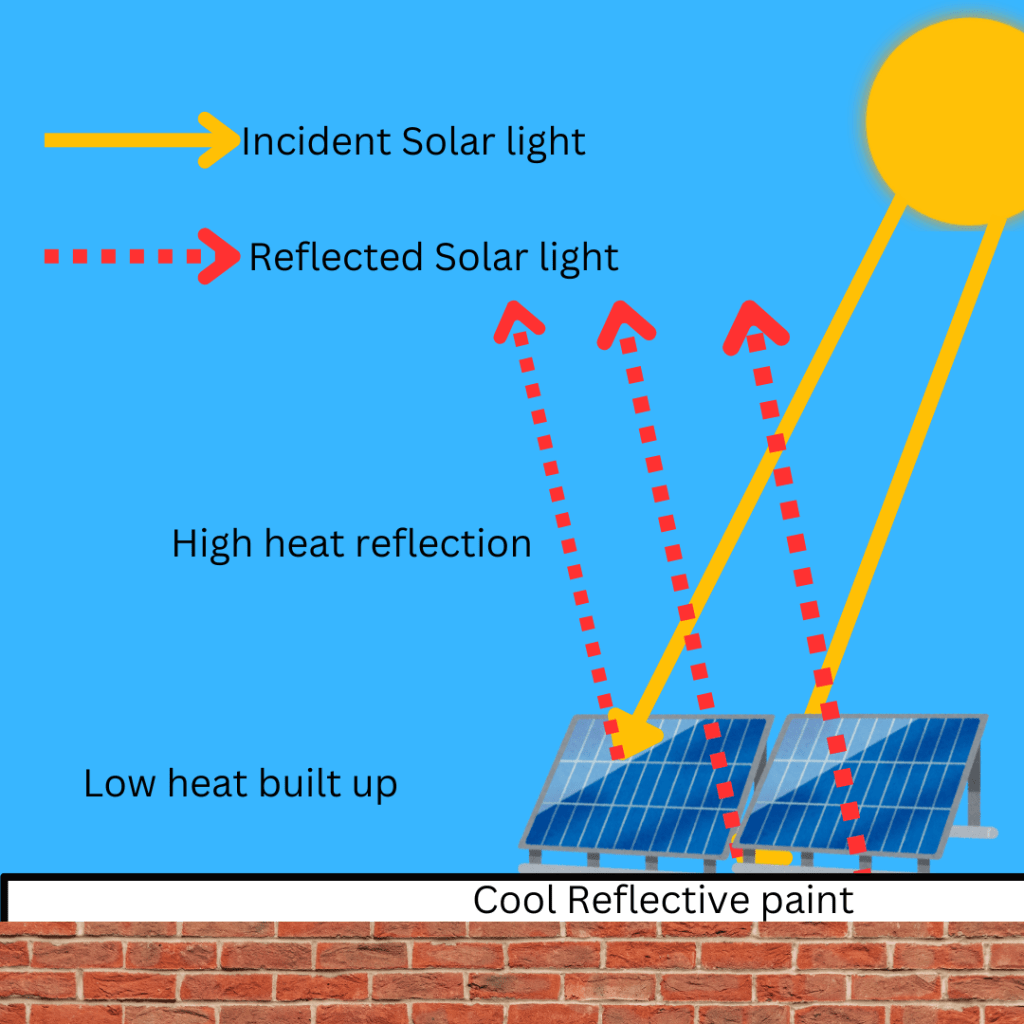The term efficiency can be defined as the ability to achieve an end goal with little to no waste, effort, or energy. Being efficient means you can achieve your results by putting the resources you have in the best way possible. Put simply, something is efficient if nothing is wasted and all processes are optimised.
The use of Solar power is an ideal example in the field of renewable energy to demonstrate efficiency. It displays how creative innovations can provide clean energy and support sustainability. It is now inevitable to make photovoltaic (PV) systems more efficient to match the rising demand for clean energy sources.Maximizing PV efficiency serves two purposes.
- First, it helps you strengthen energy production.
- Secondly, switching to solar power becomes affordable and sustainable.
However, just like any energy system,it is virtually impossible to work at 100% efficiency. All that we can strive towards is minimising it to realise its full potential.
More heat means more solar production? Right?
Well the answer is both yes and no. Although recent hot weather has produced record amounts of solar power,too much heat can actually be detrimental to energy production using photo voltaics.The impact of heat on solar panels is to do with the laws of thermodynamics – the science of heat and how it affects things.The electricity generated by solar panels comes from a flow of particles called electrons inside the electrical circuit.When temperatures soar, these electrons can bounce around too much – and this reduces voltage, or the amount of electricity generated.Too much heat also reduces the efficiency of the solar panel, by 0.5 percentage points for every degree Celsius rise in temperature.
The research led by Dr Ansar Khan from the University of Calcutta and co-authored by UNSW Sydney Scientia Professor Mattheos (Mat) Santamouris used mesoscale (weather system) simulations due to the absence of available observational data for rooftop photovoltaic solar panels (RPVSPs) to model their impact on local climate conditions at the city-scale. They found that in a scenario with complete RPVSP coverage in a city, the urban temperature could increase in the day up to 1.5°C during peak summer periods and decrease at nighttime up to 0.6°C.These findings were recently published in Nature Cities journal.The researchers say it highlights the opportunity to develop integrated solutions for RPVSPs, such as reflective materials for rooftops and greenery combinations, to balance their many benefits with their potential drawbacks in urban environments..
“We found there is a linear association between the temperature increase and the percentage of rooftops covered with PVs,” Prof. Santamouris says. Under the maximum scenario of 100 per cent coverage during the peak summer period, our data shows that RPVSPs lead to a significant temperature increase during the day.The heat effect of Photovoltaics at 100 percent rooftop coverage would curb much of the renewable energy benefit. Estimates show that in Sydney, almost 40% of the electricity PVs produce is used to compensate for the over heating impact, in addition to cooling load-mainly air conditioning.
“When RPVSPs are installed on roofs, they absorb a significant amount of solar energy, converting some of it into electricity and generating heat in the process,” Prof. Santamouris says. “This is primarily due to the lower albedo (reflectance) of the panels, but also the airflow over the top and underside of the PVs, which amplifies the heating effect.This means, during the peak summer period, the surface can be as hot as 70°C, making it impossible to have a cooling effect on the urban temperature.Conversely, the transfer of heat through radiation at night time leads to the surface temperature of the PVs being lower than the urban temperature at night time thereby lowering the surrounding air temperature. This is a crucial benefit as the impact of climatic warming is expected to be felt most acutely during nights, which could warm by around 4 degrees centigrade over the next century on average, Prof. Santamouris says.
How can cool roof paints help in such a scenario?
Prof. Santamouris advocates for the use of highly reflective cool roof materials that bounce heat rather than absorb heat could also be used to boost the energy production of nearby RPVSPs while mitigating local urban heating during the day. “Combining PVs withcool roofs can increase the capacity of photovoltaics by up to 6 – 7 per cent and significantly reduce surface temperatures.” Prof. Santamouris says.
Increase of the albedo of urban surfaces and building roofs, using reflective coatings, can boost the efficiency of roof integrated Photovoltaics and considerably mitigate the released heat in two ways.
- Reflective roofs present a much reduced surface temperature compared to conventional ones- upto 10 degrees in peak summers .
- Additionally, the higher reflectance of the roofs increases the solar input to monofacial but mainly to bifacial PV solar panels, boosting their electricity production.
Under clear sky conditions, reflective materials present up to 40 °C lower surface temperature compared to a dark coloured material of the same type ,while the heat released by reflective roofs during clear sky conditions in warm climates may be up to 72% lower than that of dark roofs. As a result, high albedo Photovoltaic roofs can reduce substantially the ambient temperature around the panels, probably decrease their front surface temperature and increase their efficiency.
Figure 1: Solar panels installed without cool reflective coatings

Figure 2: Solar panels installed with cool reflective coatings

Increasing the roofs’ albedo entails higher front and back irradiance on bifacial Photovoltaic modules as well as higher total irradiance on monofacial PhotoVoltaic modules resulting in increased energy yield. For the monofacial modules, ground reflected radiation counts for about 3% of the total effective irradiance and decreases to about 1% when the tilt of the modules is less than 25° from the horizontal.The contribution of the reflected radiation is much higher for the bifacial systems, accounting on average for about 10% of the incident effective radiation. For instance, in Shanghai, China, an increase of the rear radiation from 50 to 250 W/m2 is found to raise the power production of bifacial PVs by 17%, while an increase of the front irradiance from 200 to 1000 W/m2 enhances the energy production by 200 % to 360 % in bifacial and monofacial modules.
Solar panels constitute a renewable energy technology highly contributing towards the decarbonisation of the energy systems. Increase of their efficiency and of the corresponding energy production is a strong requirement to accelerate energy transition. Reflective roofs can efficiently help to boost the performance of the PhotoVoltaic modules and reduce their overheating impact with a very low investment. The recent development of the super cool materials for roofs and building surfaces presenting sub-ambient surface temperatures and a very significant capacity to reduce the ambient temperature, offers a tremendous potential to achieve very high roof albedo values and further boost the energy yield of roof-mounted PhotoVoltaics.




